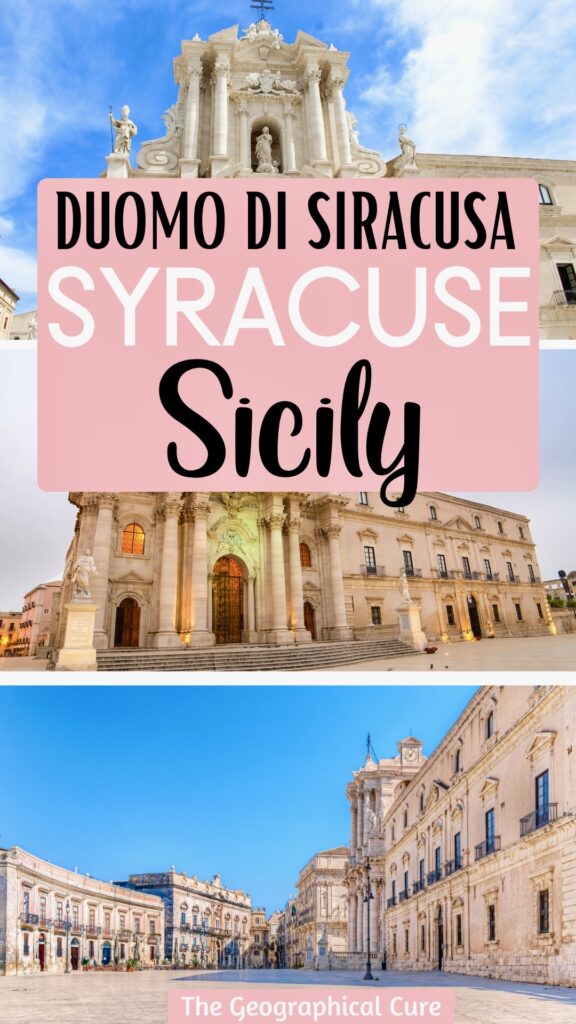The Duomo di Siracusa is one of Italy’s most beautiful churches. It’s also known by its official name, the Cathedral of the Holy Nativity of Mary.
The Duomo is a remarkable edifice, built on the skeleton of a 5th century B.C. Greek temple. It’s a fine example of the melting pot nature of Sicily itself — with Greek, Byzantine, Arab, Norman, and Baroque influences.
In this guide, I’ll give you a mini history of the church and tell you everything to see inside.
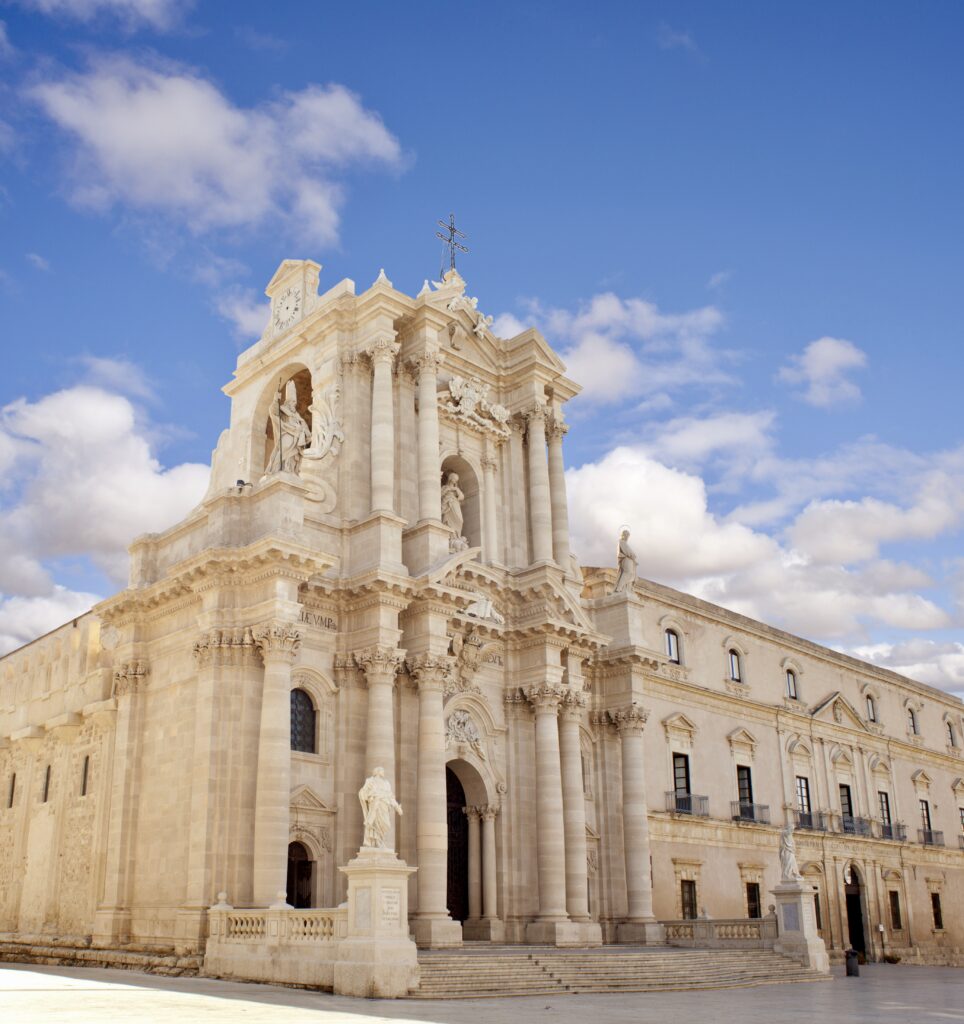
History of Syracuse Cathedral
Syracuse Cathedral began life as a Greek temple, the Temple of Athena. The temple was renowned throughout the Mediterranean.
In 535, the Byzantines converted the temple into a church. To create walls, they left the Doric columns intact and filled in the space between them.
The resulting basilica had three naves, each one terminated by an apse. it was dedicated to the Nativity of Mary.
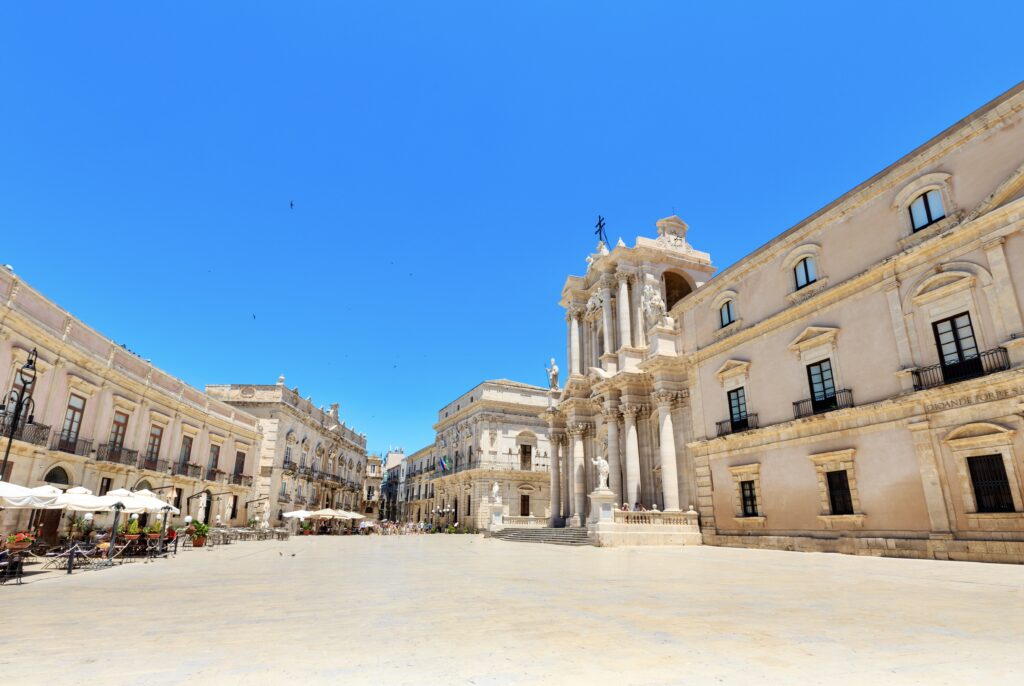
Unfortunately, when the Arabs conquered Sicily in the 9th century, the church was ransacked and, possibly, converted into a mosque.
In the 11th century, Syracuse surrendered to the Norman King Roger I. He got busy renovating and transformed the building back into a working church. The Normans added mosaics in the apses and polychrome marble flooring.
In 1693, an earthquake hit Sicily that destroyed much of the southeastern Val di Noto, including Syracuse. The Norman facade and the bell tower were destroyed.
The bell tower was never rebuilt. But the facade was, courtesy of architect Andrea Palma. The dramatic facade was one of the major works in Sicily during the 1700s.
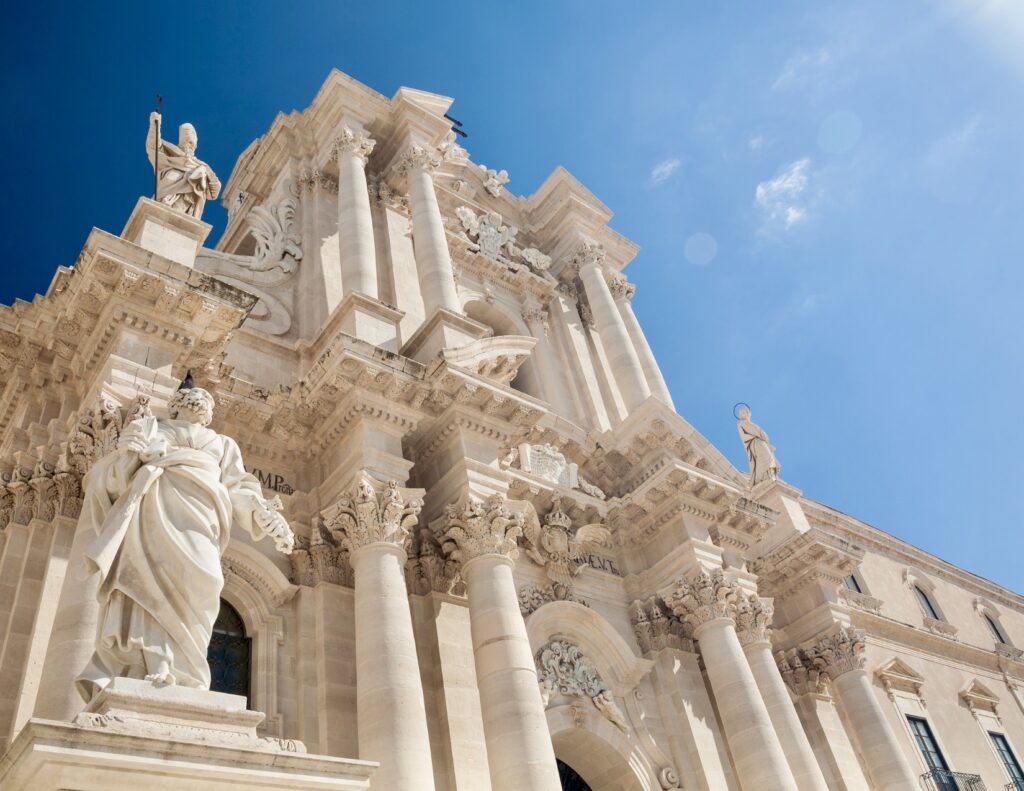
Guide To The Duomo di Siracusa: What To See
The church interior was originally in a Greek cross plan, but it’s been expanded several times. Here’s what you should see inside and out.
Baroque Facade
As I mentioned above, the original Norman facade was felled in an earthquake and replaced with a finely chiseled Sicilian Baroque extravaganza. Though inspired by Roman Baroque architecture, the Sicilian Baroque style is more flamboyant.
The facade has two superimposed orders with Corinthian columns.
In the first order at street level, you can see two limestones statues on pillars, St. Peter and St. Paul.
In the second order, the Virgin Mary is in the center flanked by Sicily’s patron saint, St. Lucia, and by St. Marziano (the first bishop of Syracuse). Below is a curvilinear pediment with the royal emblem of Carlo III Borbone, the eagle.
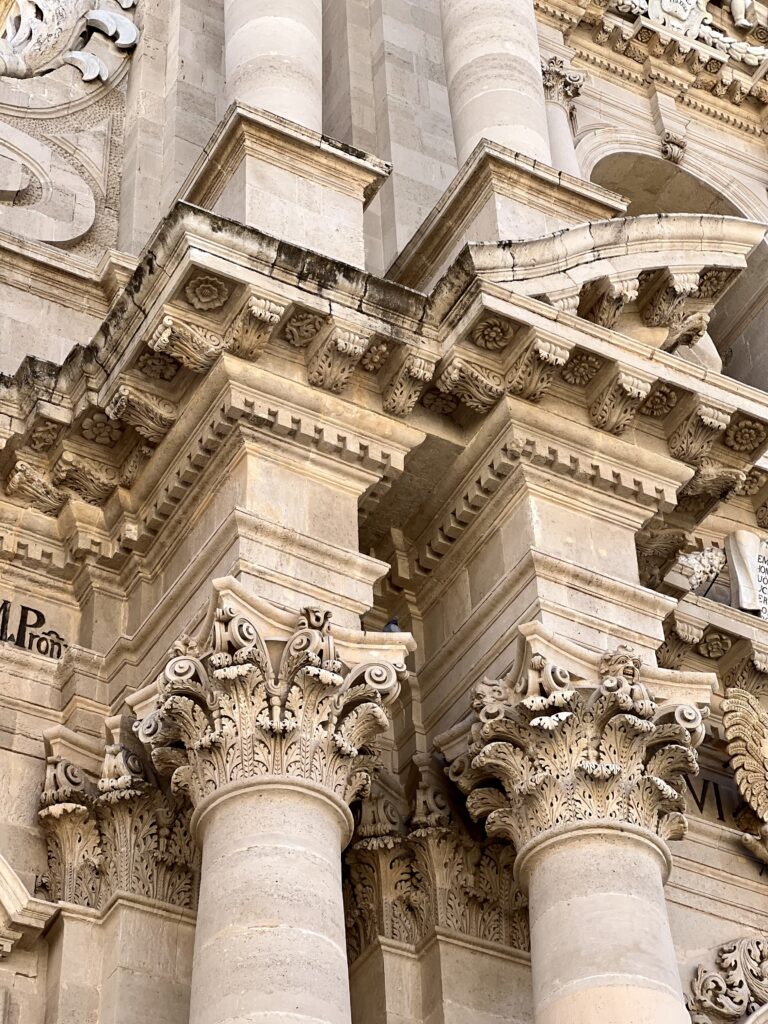

The statues were created by Ignazio Marabitti, a sculptor from Palermo.
Temple of Athena
As I mentioned above, the most astonishing part of the church is first revealed on the exterior.
Where the Duomo stands today, there was once there was a grand Greek temple, an Athenaion, dedicated to the goddess Athena.
Dating from 480 B.C., it was built on the orders of the Syracusian tyrant Deinomenes to celebrate a victory over the Carthaginians. The battle had secured Greek control of Sicily and ushered in an era of peace.
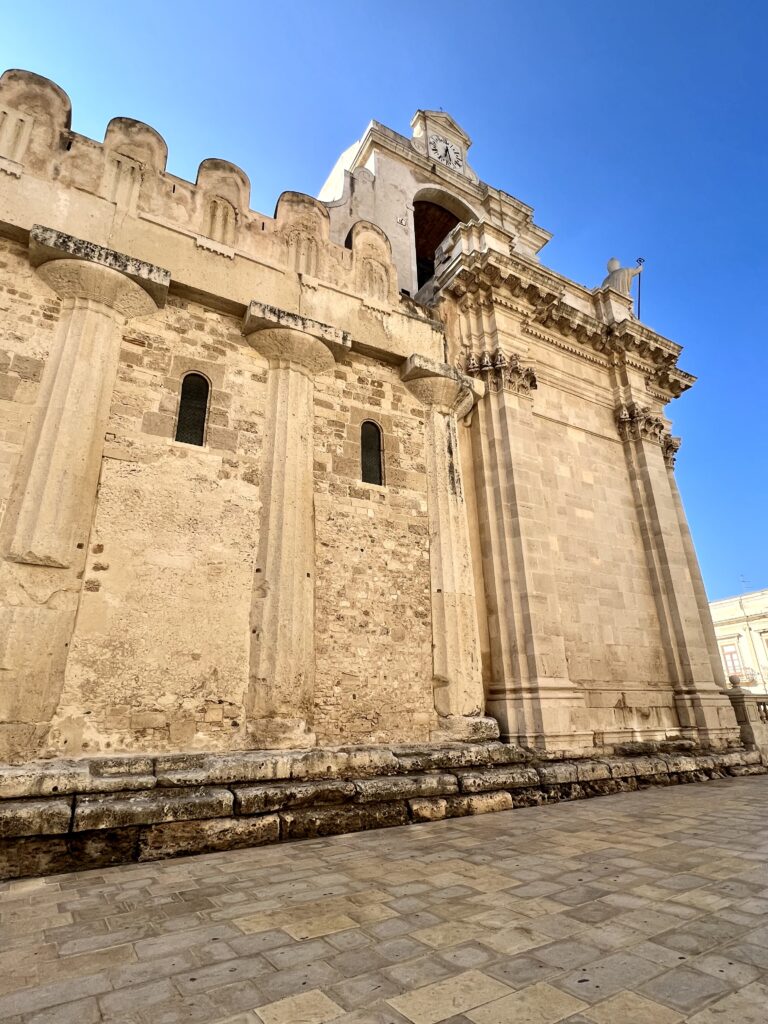
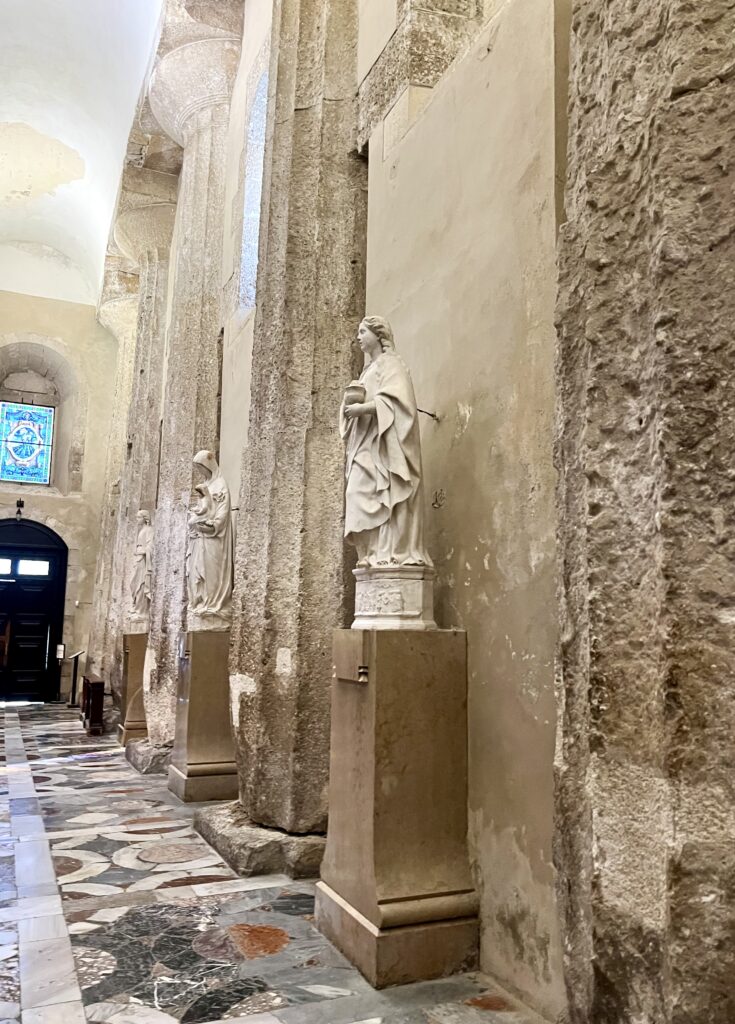
The temple had 6 columns on the front and back and 14 columns on the side. You can actually see the ancient colonnade on the exterior and interior of the church.
The entablature (horizontal frieze) has rounded crenellations with triglyphs and smooth metopes. The cornice was decorated with lion’s heads.
According to Cicero, the Greek philosopher and politician, the cella (central chamber) of the temple once held paintings adorning the walls that depicted battle scenes and portraits of the kings and tyrants of Syracuse. A door was inlaid with ivory and had the face of a gorgon.
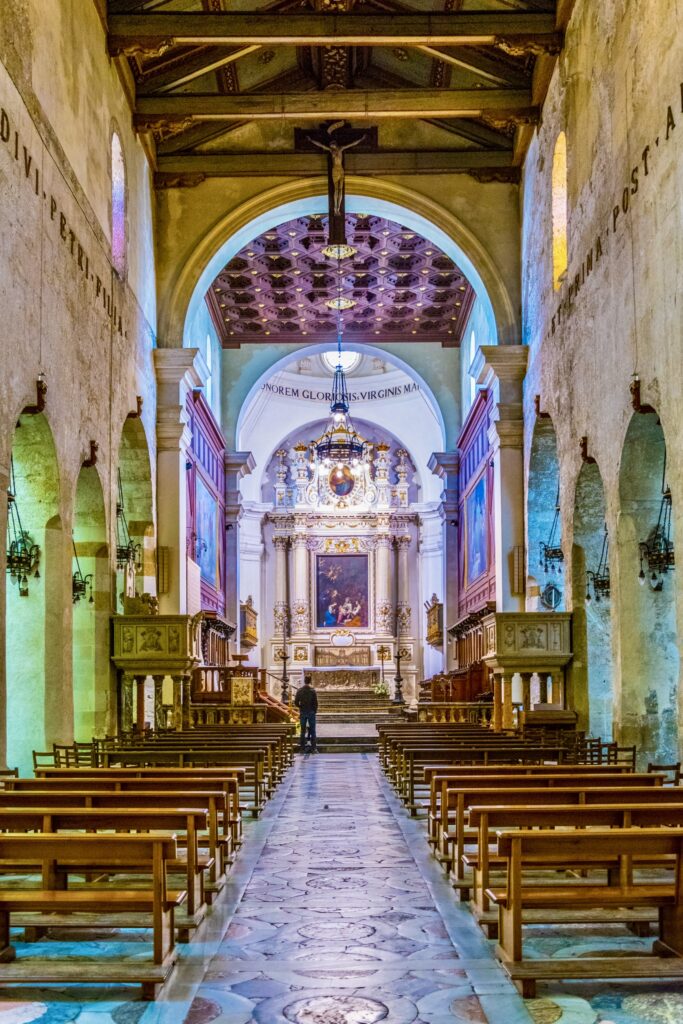
Interior
The Duomo has a severe simplicity, with a central nave and two aisles. It combines rustic walls with Baroque decoration, in a surprising integration of architectural styles.
The nave is separated by a series of arches on each side, added by the Byzantines in the 6th century. Between them hang lovely wrought iron chandeliers.
The central nave ends in an ornate Baroque altar from 1659. At the back is a large painting depicting the Nativity of Mary by Giacinto Brandi.
In the right aisle, there are a series of chapels. They take their dimensions from the spacing of the ancient columns.
The first one contains the cathedral’s marble baptismal font, which consists of a Greek vase held by bronze lions from the Norman age. You can see traces of ancient mosaics.
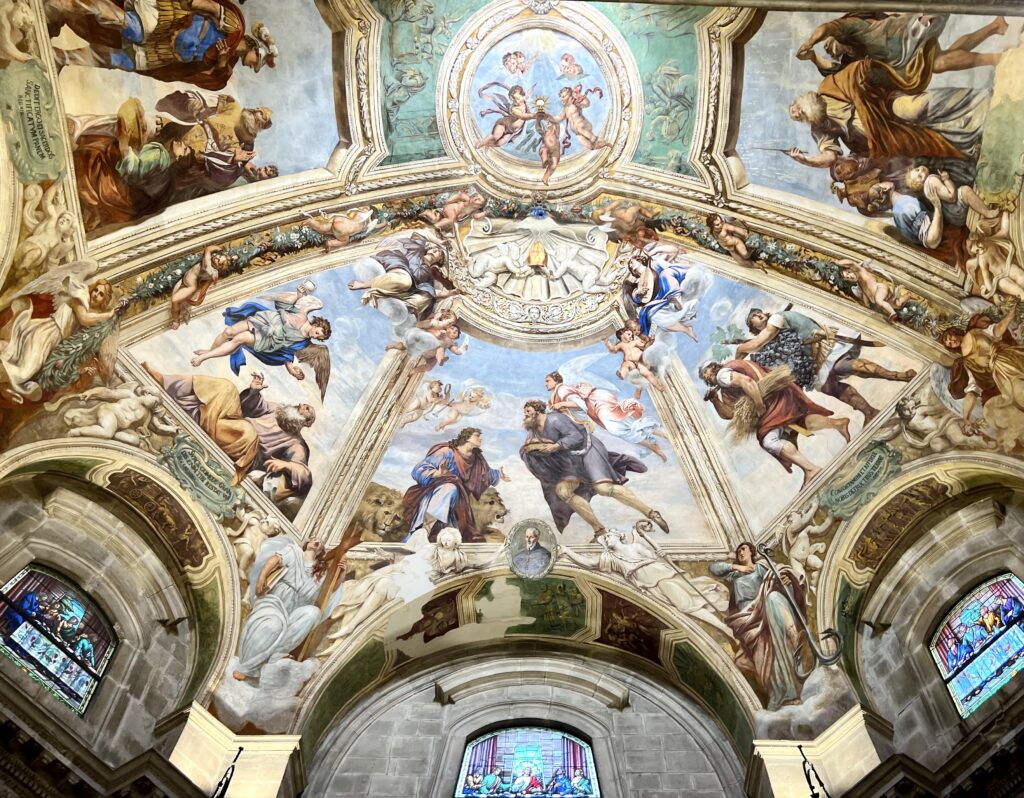
The second chapel is dedicated to St. Lucy, the patron saint of Syracuse. She was a Christian during the time of Diocletian’s persecution. After having a mystic vision, she declined to marry. Her finance protested fiercely.
The authorities tried to intervene, torturing Lucy, gouging out her eyes, and finally killing her with a sword to the neck. After that, Lucy became a revered martyr. She’s often depicted in art carrying her eyeballs on a plate, as in the statue you see below.
The chapel contains a reliquary with a bone from her left arm. On the walls of the chapel there are marble medallions with busts of St. Lucy.
You can also admire the gorgeous marble floors installed by the Spaniards in the 15th century and an altar designed by the famous architect Luigi Vanvitelli. A silver statue of Lucy is paraded around town in a procession every year in December.
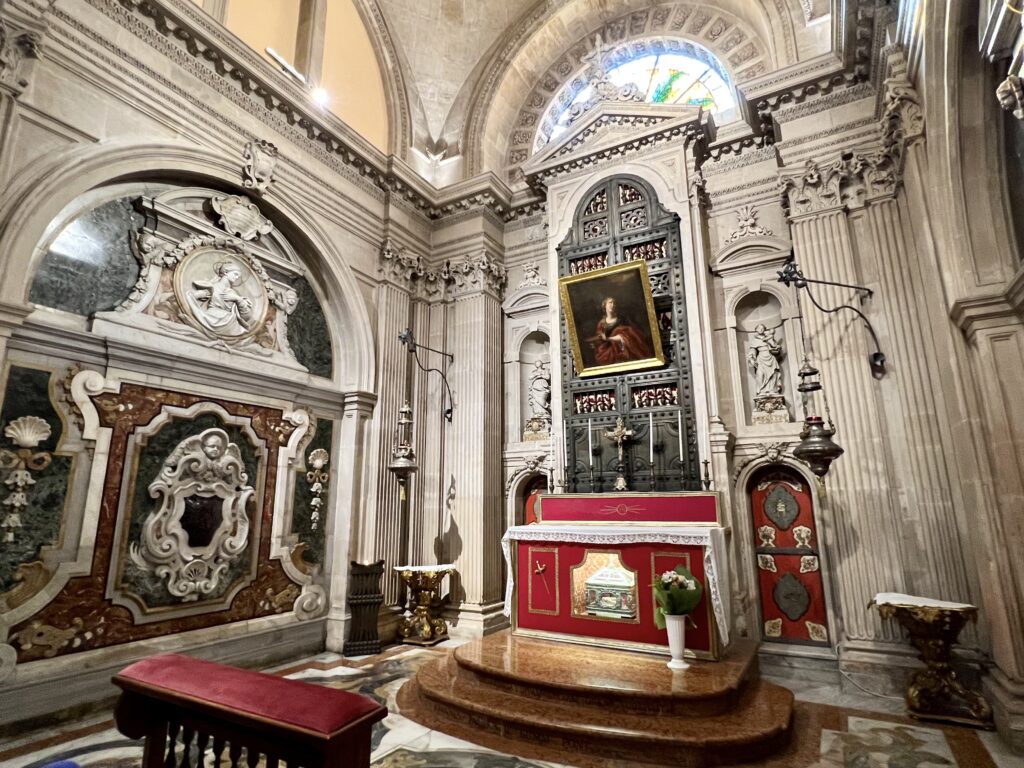
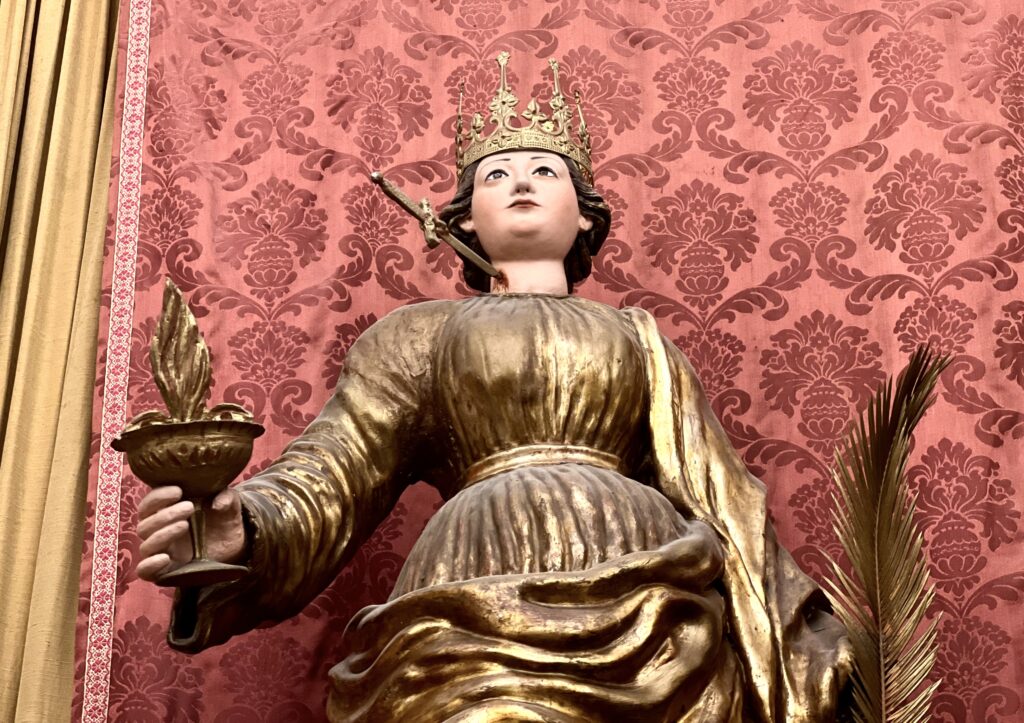
You can also find the Torres Chapel (with a The Last Supper painting) and the Chapel of the Crucifix (dedicated to a 13th century Byzantine style crucifix).
The left aisle has the only preserved Byzantine apse, which contains the famous statue, Madonna of the Snow by Antonello Gagini. It’s a white marble statue of Mary and the Christ child.
The left wall is lined with 2,500 year old Doric columns, the ones you saw from the outside. Between the columns, statues line the wall depicting St. Lucy, St. Catherine, and a Madonna with child.
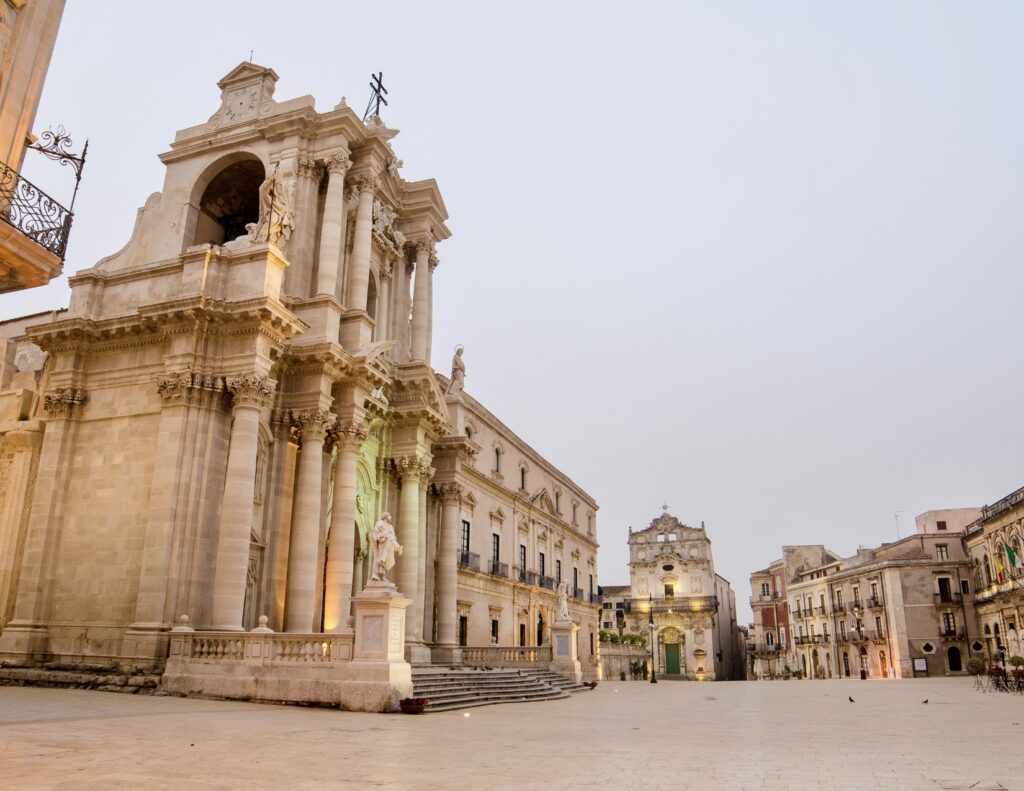
Practical Guide & Tips For The Duomo di Siracusa
Address: Piazza Duomo 5, Syracuse
Ticket price: 2 euros
Opening Hours: Open daily 9:30 am to 6:00 pm.
Dress Code: You have to dress modestly to enter. Your shoulders, torso, and knees should be covered.
I hope you’ve enjoyed my guide to the Duomo di Siracusa. You may enjoy these other Sicily guides:
- 2 days in Palermo itinerary
- 2 days in Syracuse itinerary
- 2 days in Trapani itinerary
- 1 day in Catania itinerary
- 1 day in Taormina itinerary
- Guide to the Valley of the Temples
- Guide to Villa Romana del Casale
- Guide to Monreale Cathedral
- Guide to the Norman Palace and Palatine Chapel
- Guide to Palermo Cathedral
- Guide to the Ruins of Segesta
- Guide to Syracuse Archaeological Park
If you want to visit Syracuse Cathedral, pin it for later.

